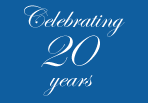

Ryan Klomp
Biography
Ryan has been an active member of the Adaptech Research Network’s eLearning Study Team since 2004. He is the Coordinator of Learning Technologies at the University of Ottawa’s Access Service. Ryan has more than 10 years of adaptive technology and transcriptions experience, and is actively involved in a number of projects aimed at improving access to materials for individuals with a print disability.
Audio
Strategies to Promote Change: How to Become a Change Agent
Ryan Klomp, Coordinator of Learning Technologies, Access Services, University of Ottawa
Ryan Klomp said that, to bring themselves into the mainstream, advocacy groups must understand the culture of the bigger institution and work with the resistance that evolves as they try to effect change.
Klomp listed eight barriers to achieving systemic change:
- Ambiguous goals
- Ambiguous participation
- Lack of a link between behaviour and intention
- “Garbage can” decision-making
- Fragmentation
- Lack of collective learning
- Non-commitment
- Lack of systemic understanding at the macro level
What makes for a good change agent? Klomp says that it takes the right attitude, right knowledge, and right skills.
Right attitude means setting reasonable goals, working with university administrators, seeking enthusiastic and dedicated allies on campus and externally, and putting attitude above skill. Right knowledge means more than being able to manage projects. It means tapping into expert resources, actively creating networking and liaison opportunities, and setting concrete, realistic objectives for the duration in office. Right skills include interpersonal, negotiation, and arbitration skills. “People skills are the number one skill you need,” said Klomp. Also, “strong communication is critical to success.”
Klomp next presented a chart depicting the “colours model” of change management developed by Caluwé and Vermaak. Their five-colour change model is a holistic way of responding to varying needs in the community and incorporating a variety of approaches.
The “Yellow-Print” focuses on power- and interest-based relationships, including how to negotiate, form coalitions, and create win–win opportunities within formal and informal organizational structures.
The “Blue-Print” requires an understanding of project management methodology and recognition that change is a highly structured process that has clearly defined rules and that must be continually monitored. It is good for short-term projects such as hosting an event. Corporations favour this methodology, but it is unsuitable for advocacy groups.
The “Red-Print” is the colour of blood and passion. Its focus is human resource management—the “soft” aspect of an organization. It needs passionate, engaging spokespersons who are able to motivate people, to make change attractive, and to appeal to people’s desire for change and to work for a cause.
The “Green-Print” represents learning and growth through self-directed experience and creation of opportunities for interaction and feedback in the organization. One example is holding luncheons to share grassroots best practices on how to change an institution in an organic way. Learning can be motivated through dialogue and other tools that remove barriers, develop growth, and highlight possibilities for change.
The “White-Print” is the most interesting and controversial, because it deconstructs the idea of “controlled change.” It represents a self-regulated system that is in constant flux, with no control, but that naturally finds equilibrium. It challenges people on their beliefs, removes obstacles to change, and encourages people to be responsible for their own learning, evolution, and management of change.
